NEWS
Content Filtering for Schools: For and Against
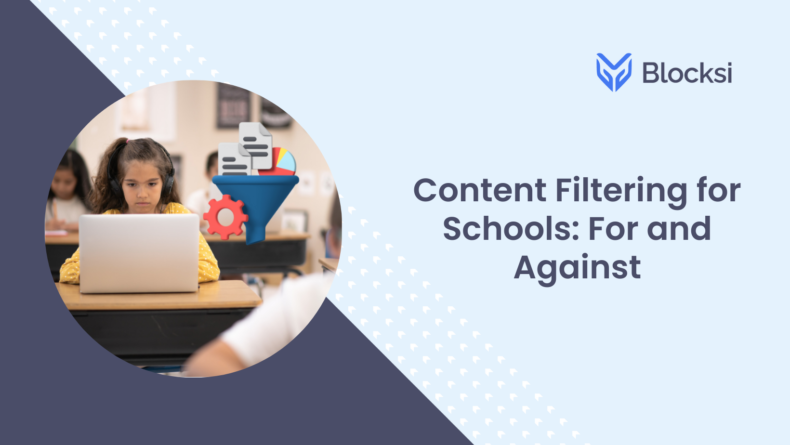
Technology in classrooms is a must in modern educational settings. However, with this integration comes the need to address the potential challenges of unrestricted online access for students. This is where school content filters become crucial. These filters are designed to restrict websites and online content, aiming to create a safer and more focused digital learning environment. In this article, we will delve into the pros and cons of using content filtering for schools, examining both sides.
The Benefits of School Content Filters
Enhancing Online Safety and Cybersecurity
One of the primary arguments in favor of school content filters is their ability to enhance online safety and security for students. The internet holds a vast amount of information but also hosts content that may not be suitable for young learners. By implementing content filters, schools can safeguard students from stumbling upon inappropriate or harmful material, creating a secure online space for exploration. So, first and foremost, content filtering for schools serves as a safety pillar — allowing students to use the internet for learning without being exposed to its harmful effects.
Focused Learning Environment and Boosted Productivity With Cloud-Based Web Filtering
Content filters also play a pivotal role in maintaining a focused learning environment. With the large array of online websites and distractions, students can easily veer off track from their educational tasks. Content filters help keep students on task by limiting access to only relevant and educational websites, ultimately enhancing productivity within the classroom.
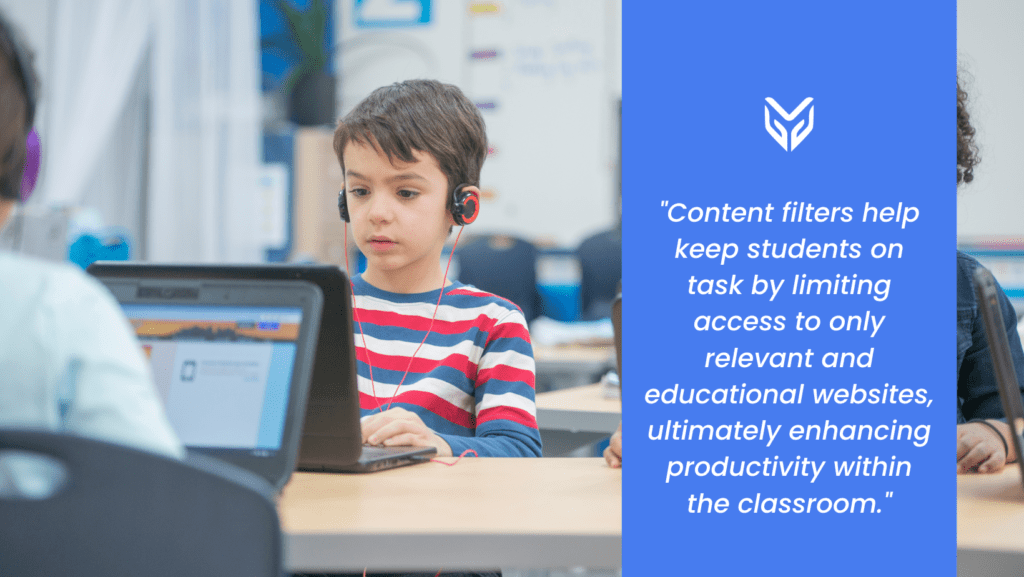
While digital devices offer students numerous learning opportunities, the internet also presents various distractions. Using cloud-based web filtering for schools aids in maintaining students’ concentration, allowing them to make better use of their time and reducing interruptions in a school environment.
Safeguarding Students and Data in School Content Filtering
In addition to shielding students from inappropriate content, school web filters play a vital role in safeguarding their privacy. When every student has access to school devices, there is an elevated risk of encountering malicious threats like phishing scams, viruses, and spam. Unfortunately, due to their relative digital inexperience and the increasing sophistication of cyber threats, students are more susceptible to falling victim to these dangers. Therefore, a heightened level of vigilance is required.
The more sophisticated content filtering for schools, supported with K-12 threat detection, excels at blocking access to violent and harmful content, such as cyberbullying, suicide threats, and searches related to gun violence and school incidents – before any of these threats turn into serious incidents.
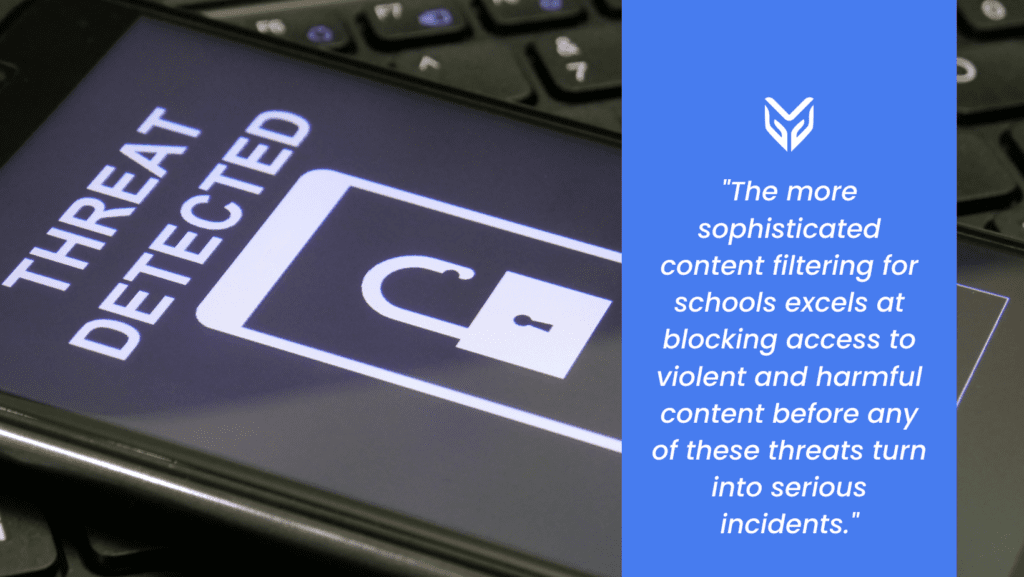
Moreover, school web filters can limit access to websites and platforms with a higher risk of cyberattacks. This protective measure not only ensures the security of students’ data but also prolongs the lifespan of school devices and safeguards the integrity of the school network. Additionally, some content filtering solutions like Blocksi offer location detection features that assist schools in locating missing devices based on their IP addresses or locations, ensuring the recovery of any misplaced devices.
The Setbacks of Content Filtering for Schools
Overly Restrictive School Content Filters
Even though content filtering solutions for schools aim to safeguard students from inappropriate or harmful online content, there is a risk that these school web filters may become too restrictive. If the content filtering system in schools becomes excessively restrictive, it can limit students’ access to vital educational resources necessary for their learning and development.
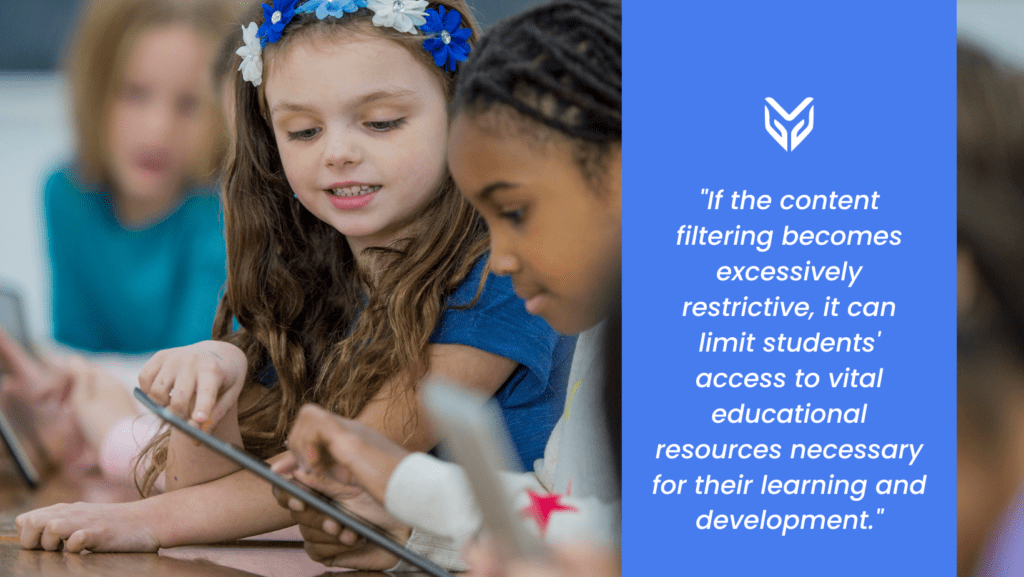
This can pose significant challenges for students, especially when they require access to specific websites for projects or research. Therefore, it is crucial to establish well-thought-out and age-appropriate content filtering policies for K-12 schools. Read on to find out more about choosing the right web filtering solution.
Technical Obstacles in Implementing School Content Filters
Implementing and maintaining content filtering for schools can present specific technical challenges, particularly in settings with limited resources and staff availability. Schools may need to allocate funds for specialized hardware or software and invest in staff training to ensure the effective operation of the web filtering system. Additionally, schools may encounter situations involving false positives or negatives, where the web filter restricts access to inappropriate websites while permitting access to safe and suitable ones.
However, you can effectively resolve all these technical issues by selecting an appropriate school web filtering solution. Such a solution should be easily deployable, cloud-based, require minimal maintenance, be user-friendly, and empower educators to use it without unnecessary complications.
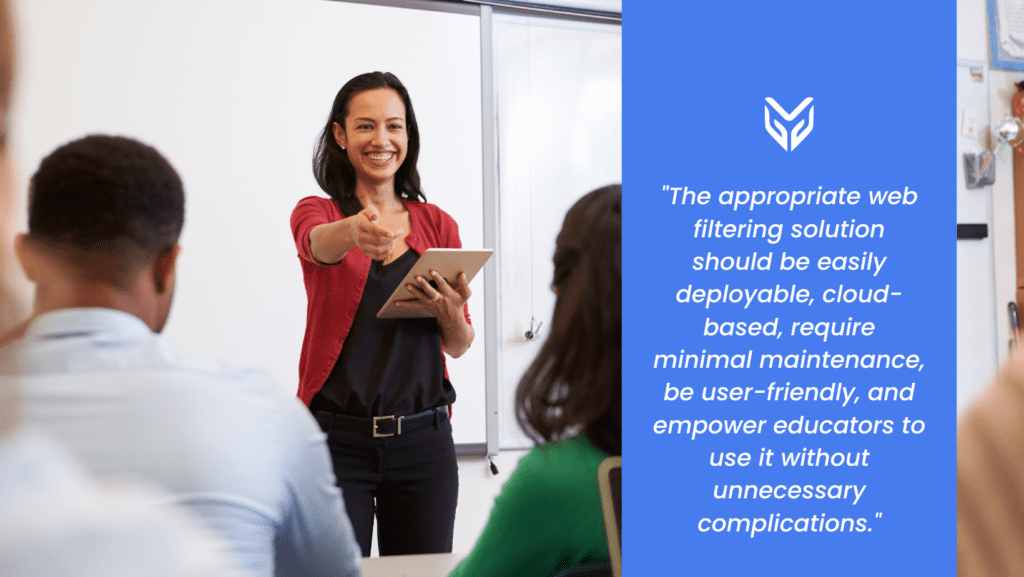
Limited Effectiveness
Typically, web filtering systems are confined to school-issued devices, exposing students to inappropriate or harmful content when using their personal devices. For instance, they might access potentially unsuitable content on social media platforms. However, it’s worth noting that if students consistently experience web filtering in school and practice digital wellness throughout most of their day, they are likely to develop positive online habits and become responsible web users on their own over time.
“Is Your School Web Filter Too Restrictive?” “How To Effectively Restrict Websites in School?” and So Much More To Be Answered
Content filtering for schools presents many invaluable benefits for schools, positioning them as an indispensable element within any comprehensive K-12 cybersecurity strategy. Furthermore, their direct impact on both educators and students cannot be overstated. On one hand, they facilitate seamless teaching, while on the other, they foster a safe and conducive learning environment.
By incorporating school web filters, schools can significantly enhance student safety, prevent students from accessing inappropriate content, heighten their focus, and streamline network management. In summary, content filtering for schools is an essential requirement for any school aiming to protect students and elevate the educational experience. To learn more about filters being an exceptionally effective and indispensable assistant for both educators and students, contact us through the button below.
SOURCES
[1] Cyberbullying: Twenty Crucial Statistics for 2023
[2] Web Filtering for Schools: A Comprehensive Guide





